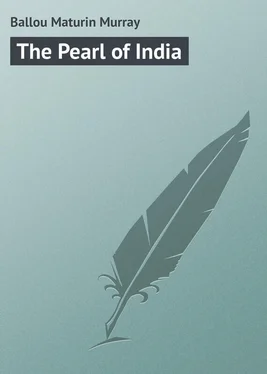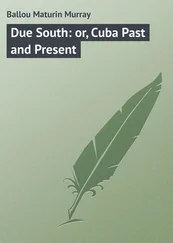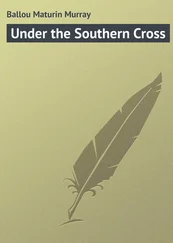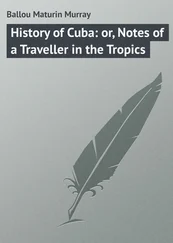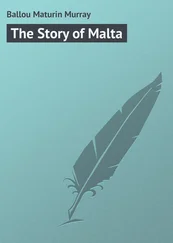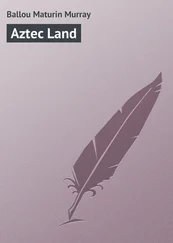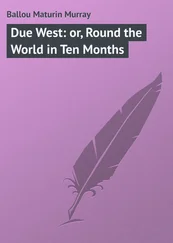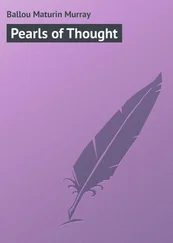Maturin Ballou - The Pearl of India
Здесь есть возможность читать онлайн «Maturin Ballou - The Pearl of India» — ознакомительный отрывок электронной книги совершенно бесплатно, а после прочтения отрывка купить полную версию. В некоторых случаях можно слушать аудио, скачать через торрент в формате fb2 и присутствует краткое содержание. Жанр: foreign_prose, Путешествия и география, на английском языке. Описание произведения, (предисловие) а так же отзывы посетителей доступны на портале библиотеки ЛибКат.
- Название:The Pearl of India
- Автор:
- Жанр:
- Год:неизвестен
- ISBN:нет данных
- Рейтинг книги:4 / 5. Голосов: 1
-
Избранное:Добавить в избранное
- Отзывы:
-
Ваша оценка:
- 80
- 1
- 2
- 3
- 4
- 5
The Pearl of India: краткое содержание, описание и аннотация
Предлагаем к чтению аннотацию, описание, краткое содержание или предисловие (зависит от того, что написал сам автор книги «The Pearl of India»). Если вы не нашли необходимую информацию о книге — напишите в комментариях, мы постараемся отыскать её.
The Pearl of India — читать онлайн ознакомительный отрывок
Ниже представлен текст книги, разбитый по страницам. Система сохранения места последней прочитанной страницы, позволяет с удобством читать онлайн бесплатно книгу «The Pearl of India», без необходимости каждый раз заново искать на чём Вы остановились. Поставьте закладку, и сможете в любой момент перейти на страницу, на которой закончили чтение.
Интервал:
Закладка:
Some of the passengers were observant enough to watch the handsome birds which followed us a thousand miles and more across the sea, even into the harbor of Colombo. There were others of the same species flying about near the shore, but we fancied it possible to select our special fellow travelers, as they still kept near to the ship's masts, though she was now at anchor. Food was thrown to them from the cook's galley, and that important functionary declared that when the ship resumed her voyage, on the following day, the flock of gulls would follow it as closely as heretofore, even through the Suez Canal and the Mediterranean Sea, until the far-away English coast was reached.
Thus much we have said by way of introduction, and having now landed on this "utmost Indian isle," let us endeavor to intelligently depict its unique characteristics, together with its past and present story, for the entertainment and information of the patient reader.
The author who sits down to write upon a given subject is generally so full of his theme that he must constantly put on the brakes, as it were, to curb his fancy. He is never thanked for what he omits from his pages, though there is so much which he might but does not express, lest his readers should feel bored by a detailed account of that which, with the added charm of time and place, may have had unwonted interest for himself. It is to be feared that words rarely convey the real spirit of what most fascinates the eye, and whatever they do not help the reader to see, like glass, they darken.
CHAPTER II
A Classic Island. – Topographical Position. – Maldive Islands. – Lands rising out of the Sea. – Size of Ceylon. – Latitude and Longitude. – A Link of a Powerful Chain. – Important British Station. – "Mountain of the Holy Foot." – Remarkable Mountain View. – Queer Speculations. – Insect Life in the Island. – Acknowledged Gem of the Orient. – Wild Elephants. – In Olden Times. – Far-Reaching Historic Connections. – Arboreal and Floral Beauties. – Perennial Vegetation. – The Feathered Tribe.
Ceylon, the Lanka Dwipe, "resplendent island," of the Hindus, the fabled isle of the Arabian Nights, and appropriately called the "Pearl of India" by the English, who are its present masters, is separated from the southern extremity of the continent by the Gulf of Manaar. Were it not that a shallow watercourse of about fifty miles in width intervenes, the island would be a peninsula. As it is, a barrier to navigation known as Adam's Bridge, consisting of several ledges of parallel rocks, nearly forms a connection with the mainland. Aided by coral growth and the sand deposit of the ceaseless current setting into the Strait of Manaar from the long reach of the Coromandel coast, this may in the course of time be consummated. The tendency is certainly in that direction, notwithstanding a system of dredging which has been adopted by the English government, enabling vessels which do not draw over ten feet of water to pass through the strait, and thus avoid the necessity of doubling the island at its southern extremity. Ceylon, – the Serendib of the Arabs, – is the gem of the Indian Ocean, an intimate acquaintance with which fully sustains the delightful promise it suggests to the stranger who beholds it for the first time as he approaches the low-lying, palm-lined shore. Indeed, it might appropriately be called the Isle of Palms, so interminable is the array of cocoanut-trees which fringe the beach.
Judging solely from its present appearance and its geographical position, it would seem to have been a portion of the mainland at some former period, though there are many able writers who do not accept this idea, reminding us that animals, birds, insects, and reptiles which are quite unknown on the continent of India exist in this island. There are no hyenas, tigers, wolves, or foxes here, though there are plenty of these creatures just across the Strait of Manaar. As an argument this is not of so much importance, however, as might at first appear, since there are so many well-known instances of a like character. The dissimilitude of Sumatra and Java, separated by only a narrow channel, occurs to us, as well as that of Madagascar, but narrowly divided from the neighboring continent. So able a writer on physical geography as Sir J. E. Tennent believes that Ceylon is not a dismembered portion of India, but a distinct formation, perhaps part of a continent which has long since disappeared. In this suggestive opinion Professor Owen also agrees with him.
The Maldive Islands, situated five hundred miles west of Ceylon, are a group of seventeen coral islets containing a vast number of cocoanut palms, and are rich in varied tropical vegetation. They have a population of thirty thousand Mohammedans, ruled by an hereditary sultan, who pays yearly tribute to the present government of Ceylon in recognition of his dependency.
Legend informs us that two thousand years and more before Christ, multitudes of isles were attached to the kingdom of Lanka (Ceylon), which were suddenly overwhelmed by the sea. At the time of the great catastrophe, it is represented that the splendid capital city of Sri-Lanka-Pura, which stood to the westward of any part of the present island, was engulfed, and disappeared forever. The Portuguese, on their arrival in Ceylon in the sixteenth century, found the natives fully believing in the traditions of its former extent, and its partial submersion. This is duly recorded by the Portuguese writers of that period. The substance of this legend is also to be found in the Mahawanso, or native chronicles of the island.
So far as the flora and fauna of Ceylon are concerned, it resembles the islands of the Malay group lying far to the eastward, much more than it does the land which is situated so near to it at the north. Geologists tell us that the island has for ages past been slowly rising from the ocean level, and we know that well-preserved marine shells are found in masses at a considerable elevation, ten miles inland, both in the north and the south of Ceylon, and especially in the foot-hills of the central mountain, or Kandian range, as it is called, near Ratnapura. When we pause to consider for a moment the possible age of these marine deposits, preconceived and popular ideas of the time which has passed since the creation of the world are utterly nullified. That the process of rising above sea level has been progressing for ages is undoubtedly true, as in the instance of Norway and Sweden, where careful measurements have been recorded, from time to time, during a period of three hundred years, clearly demonstrating that the land of those countries is steadily rising, while the adjacent sea subsides. In some other instances the process is directly reversed, the land obviously, though slowly, sinking, and the ocean rising. This is a well-known operation, not confined to any one portion of the globe. At the ancient town of Pozzuoli, on the shore of the Bay of Naples, there is a solid marble pavement once belonging to a pagan temple, built between two and three thousand years ago. The temple was doubtless originally founded on the dry land, but this indestructible floor is between nine and ten feet below the level of the sea at this writing.
Ceylon is peculiar in its shape, resembling a cone, the smaller end nearest to the continent which lies so close to it. This northern portion of the island is a flat, narrow peninsula with a sandy soil, but which by proper management is made to yield certain crops fairly well. The western and southern coasts are low and densely wooded, having many small bays and picturesque indentations, while the eastern side is characterized by a bold and precipitous shore, quite inaccessible from the sea, yet affording one or two excellent harbors and several indifferent ones. The important and much-praised port of Trincomalee is on this side of the island, where several open roadsteads are commercially available for coasting vessels, so built, like most oriental water-craft, that they can be drawn up on the beach in rough weather. The coast is blockaded on the northwest by numberless rocks, shoals, and sandbanks, impeding navigation, though the island can be circumnavigated, as already indicated, by means of the Paumben Pass, between Ramisseram and the continent. The north and northwest coasts are especially low and flat, undoubtedly formed by ages of sand deposits brought down from the north by the ceaseless currents and lodged upon coral formations as a foundation. In area, Ceylon is more than three times the size of Massachusetts, containing twenty-five thousand square miles. The circuit of the island by water is calculated to be about seven hundred miles. In Pliny's time he made the circumference four times that distance. The latest statistics give it a population of three millions, which is a sparse occupancy for so extensive a territory, and one whose natural resources are sufficient for the support of that number of people many times multiplied. Taken as a whole, the island is perhaps the most thinly inhabited spot in the Orient, though it is the largest and most important of what are known as the crown colonies of the British Empire. Its number of people is annually on the increase, as shown by the English Colonial Blue Book, – an indisputable evidence of material prosperity. The extensive ruins of ancient cities existing in the interior show that there must have been in the past at least thrice the present number of people upon the island, while some authorities place the possible aggregate much higher than we have named, basing their calculation upon the extraordinary size and number of the "buried cities," one of which is reputed to have contained three million inhabitants, and over four hundred thousand organized fighting men, whose weapons were bows, arrows, and spears.
Читать дальшеИнтервал:
Закладка:
Похожие книги на «The Pearl of India»
Представляем Вашему вниманию похожие книги на «The Pearl of India» списком для выбора. Мы отобрали схожую по названию и смыслу литературу в надежде предоставить читателям больше вариантов отыскать новые, интересные, ещё непрочитанные произведения.
Обсуждение, отзывы о книге «The Pearl of India» и просто собственные мнения читателей. Оставьте ваши комментарии, напишите, что Вы думаете о произведении, его смысле или главных героях. Укажите что конкретно понравилось, а что нет, и почему Вы так считаете.
